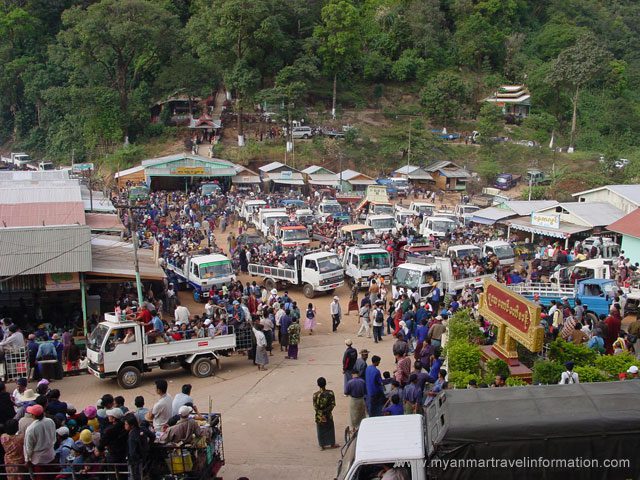Yangon (formerly Rangoon) is the largest city in Myanmar (formerly Burma). A mix of colonial architecture, modern high-rises and gilded Buddhist pagodas define its skyline. Its famed Shwedagon Paya, a huge, shimmering pagoda complex, draws thousands of pilgrims annually. The city’s other notable religious sites include the Botataung and Sule pagodas, both housing Buddhist relics.
The Shwedagon Pagoda; officially named Shwedagon Zedi Daw and also known as the Great Dagon Pagoda and the Golden Pagoda, is a gilded stupa located in Yangon, Myanmar
The Sule Pagoda is a Burmese stupa located in the heart of downtown Yangon, occupying the centre of the city and an important space in contemporary Burmese politics, ideology and geography.
Bogyoke Aung San Market is a major bazaar located in Pabedan township in central Yangon, Myanmar. Known for its colonial architecture and inner cobblestone streets, the market is a major tourist
The Botataung Pagoda is a famous pagoda located in downtown Yangon, Myanmar, near the Yangon river. The pagoda was first built by the Mon around the same time as was Shwedagon Pagoda—according to local
Kandawgyi Lake, is one of two major lakes in Yangon, Burma. Located east of the Shwedagon Pagoda, the lake is artificial; water from Inya Lake is channelled through a series of pipes to Kandawgyi Lake
Inya Lake is the largest lake in Yangon, Burma, a popular recreational area for Yangonites, and a famous location for romance in popular culture
The National Museum, located in Dagon, Yangon, is the one of the national museum of Burmese art, history and culture in Myanmar.
The Yangon Zoological Gardens is the oldest and the second largest zoo in Myanmar. Located immediately north of downtown Yangon near Kandawgyi Lake, the 69.25-acre recreational park also includes
The Bogyoke Aung San Museum, located in Bahan, Yangon, is a museum dedicated to General Aung San, the founder of modern Myanmar. Established in 1962, the two-story museum was Aung San’s last residence before his assassination in July 1947.
































